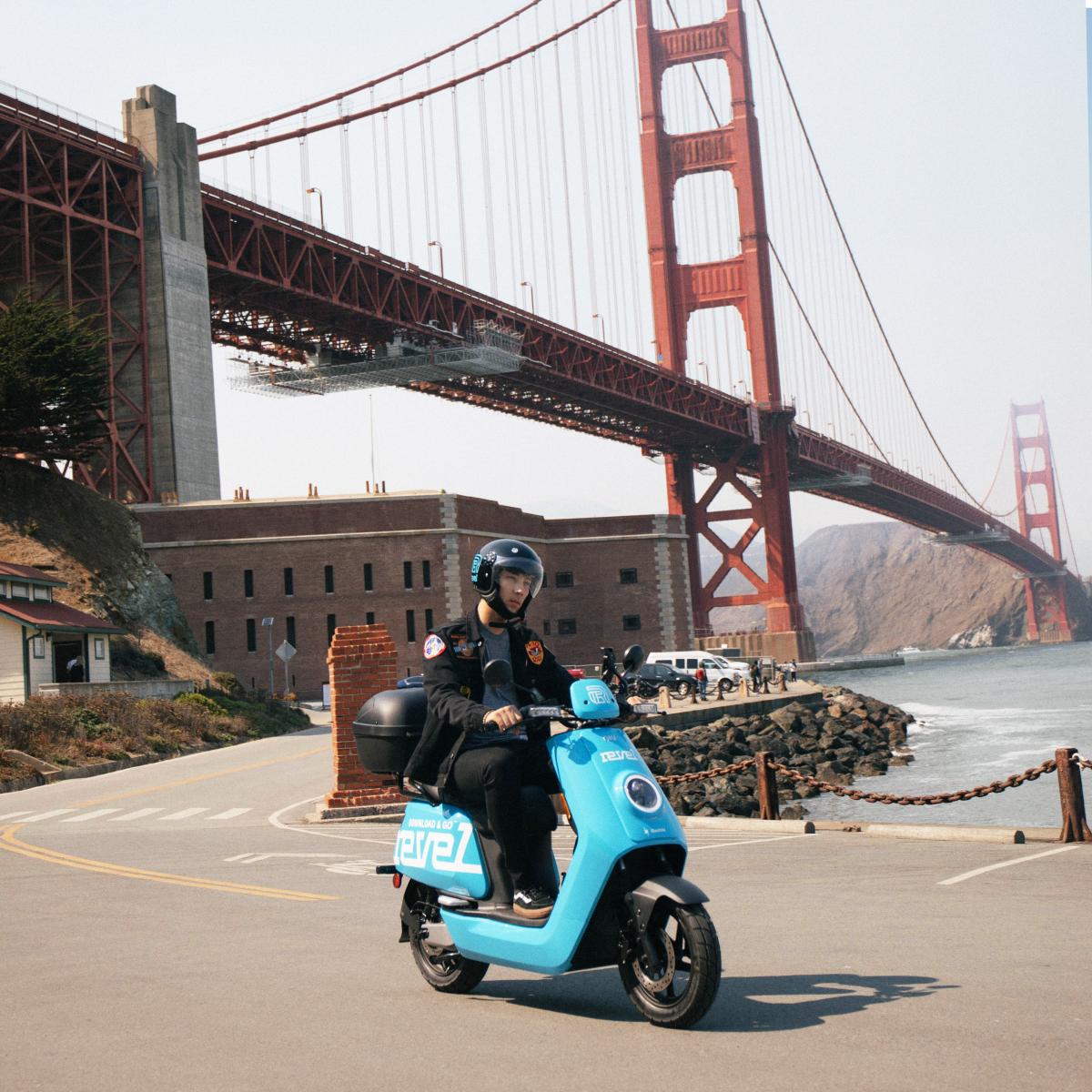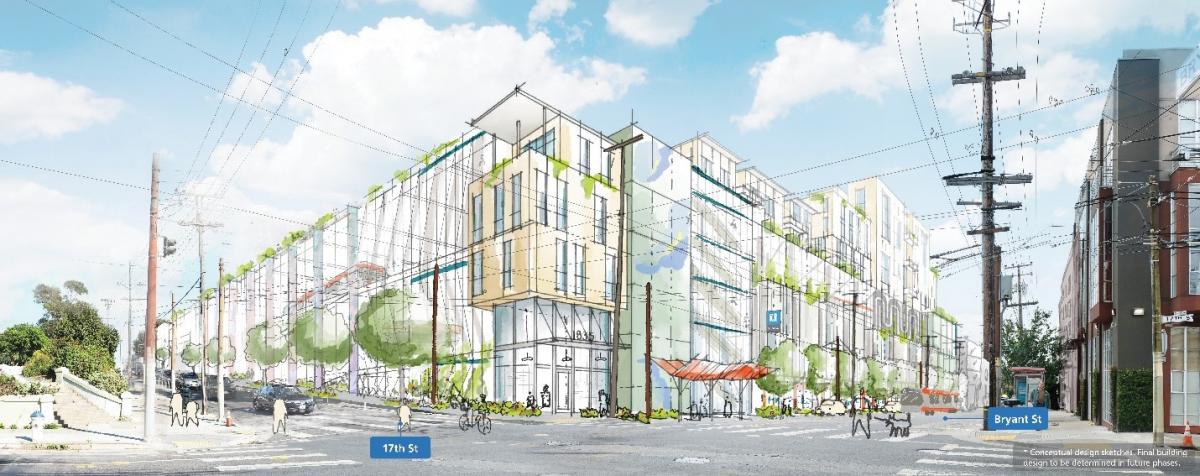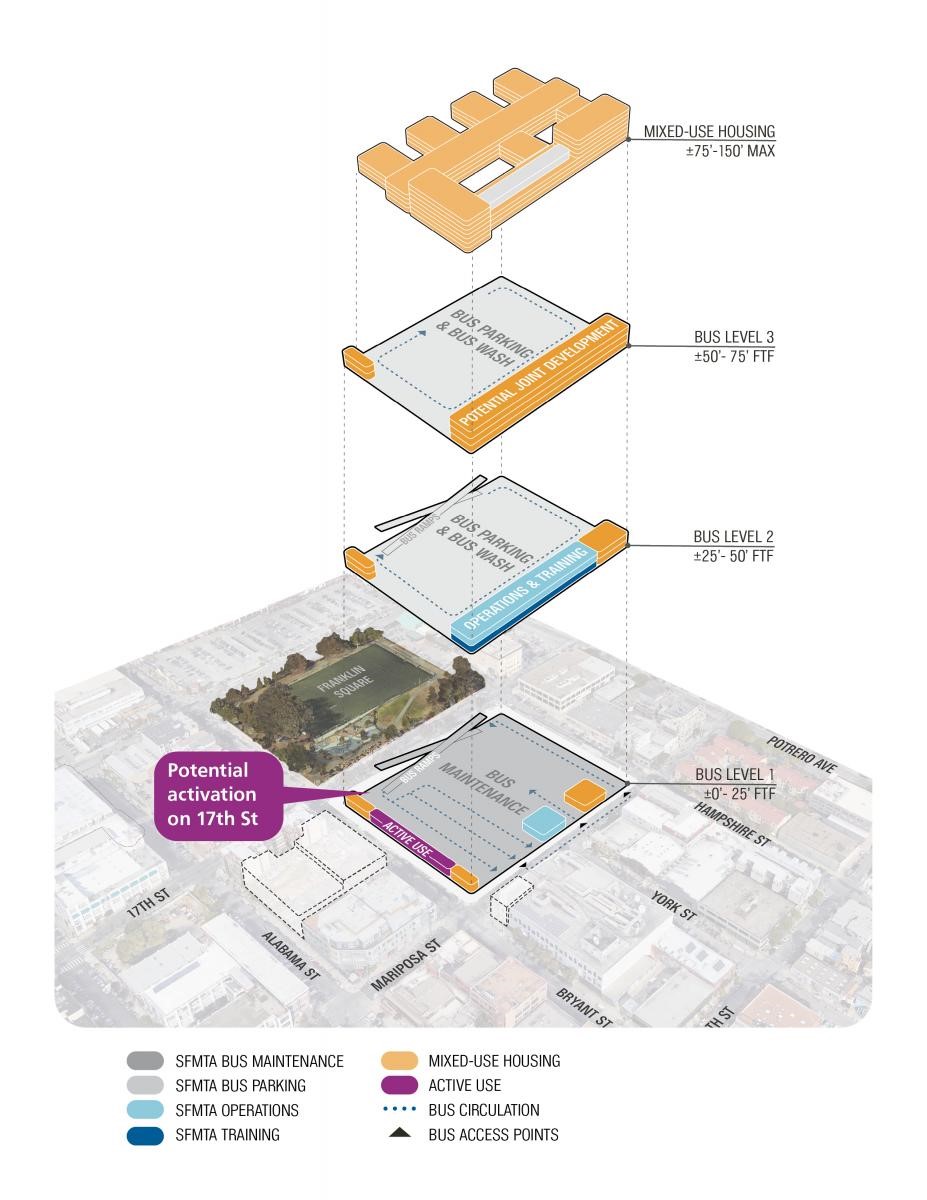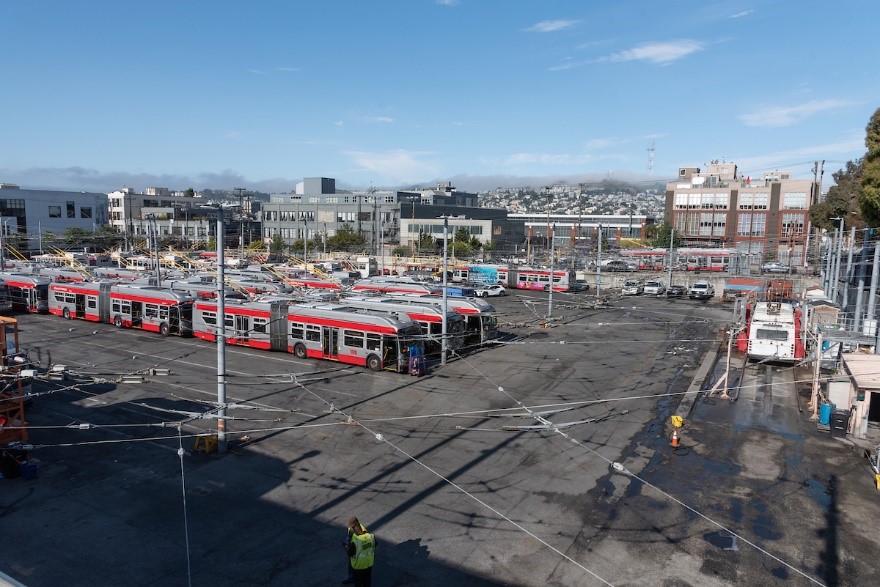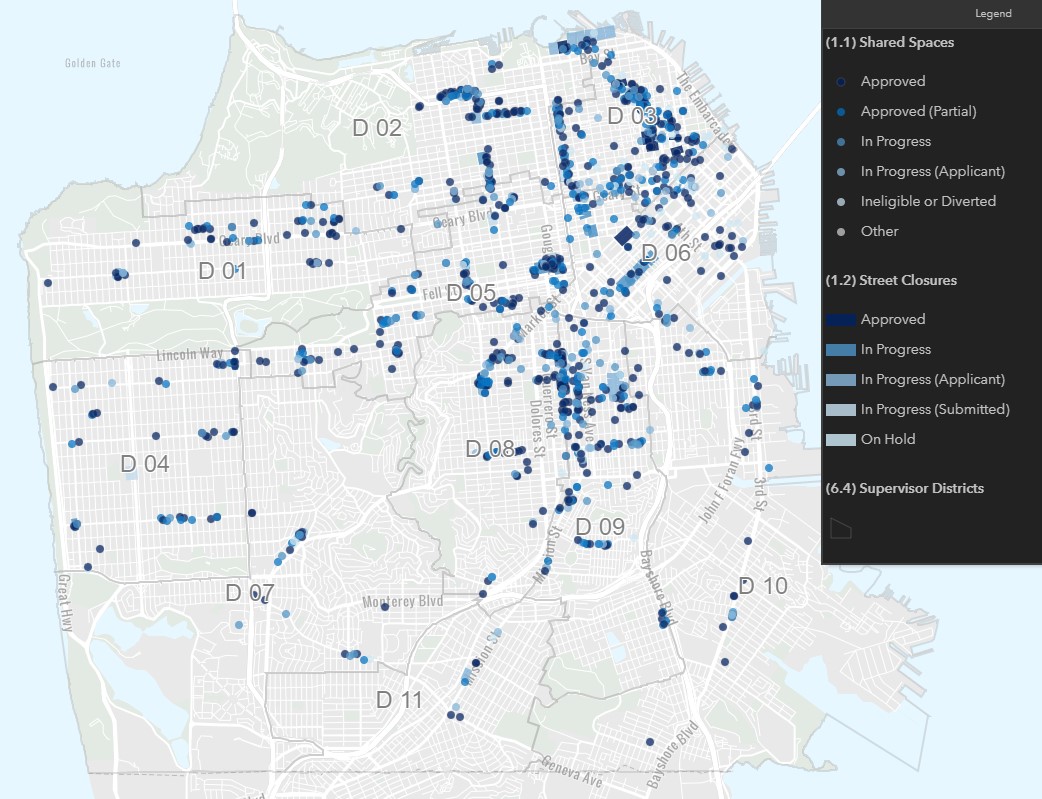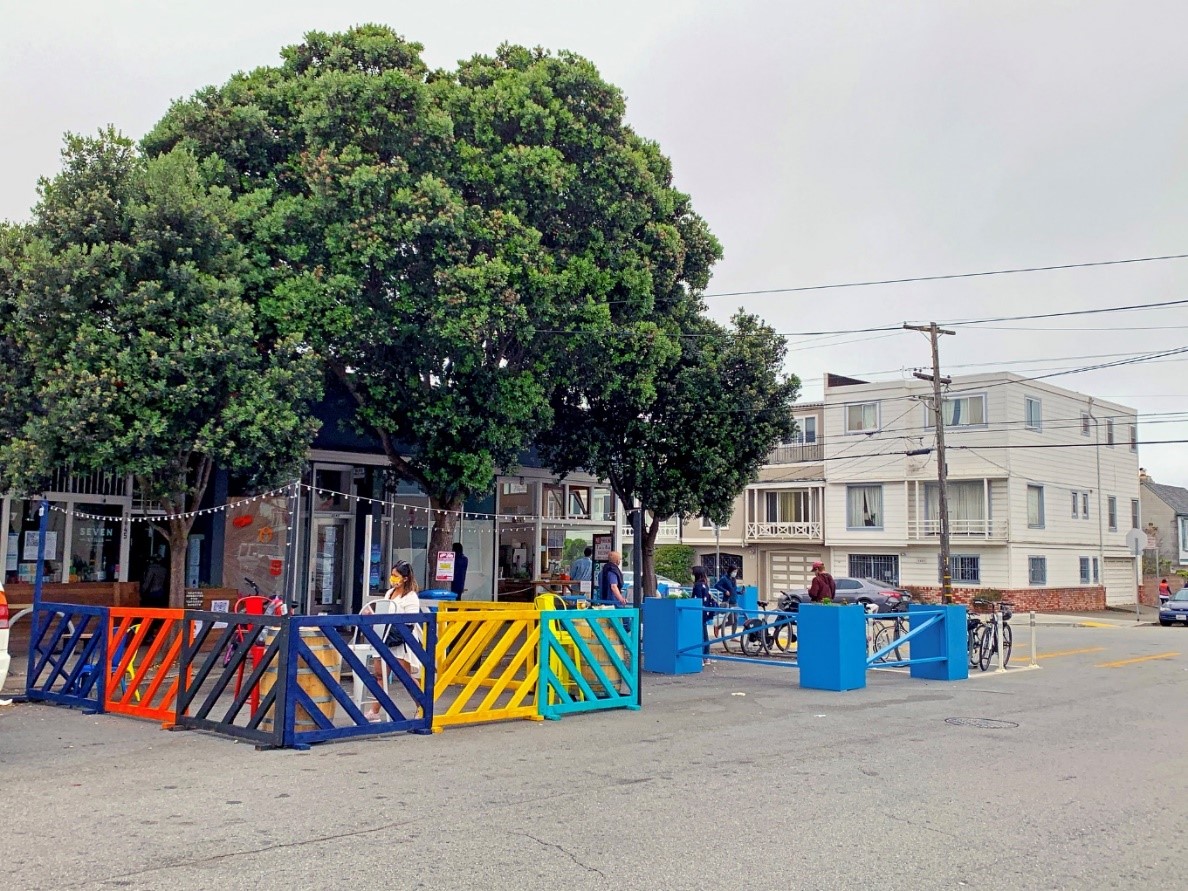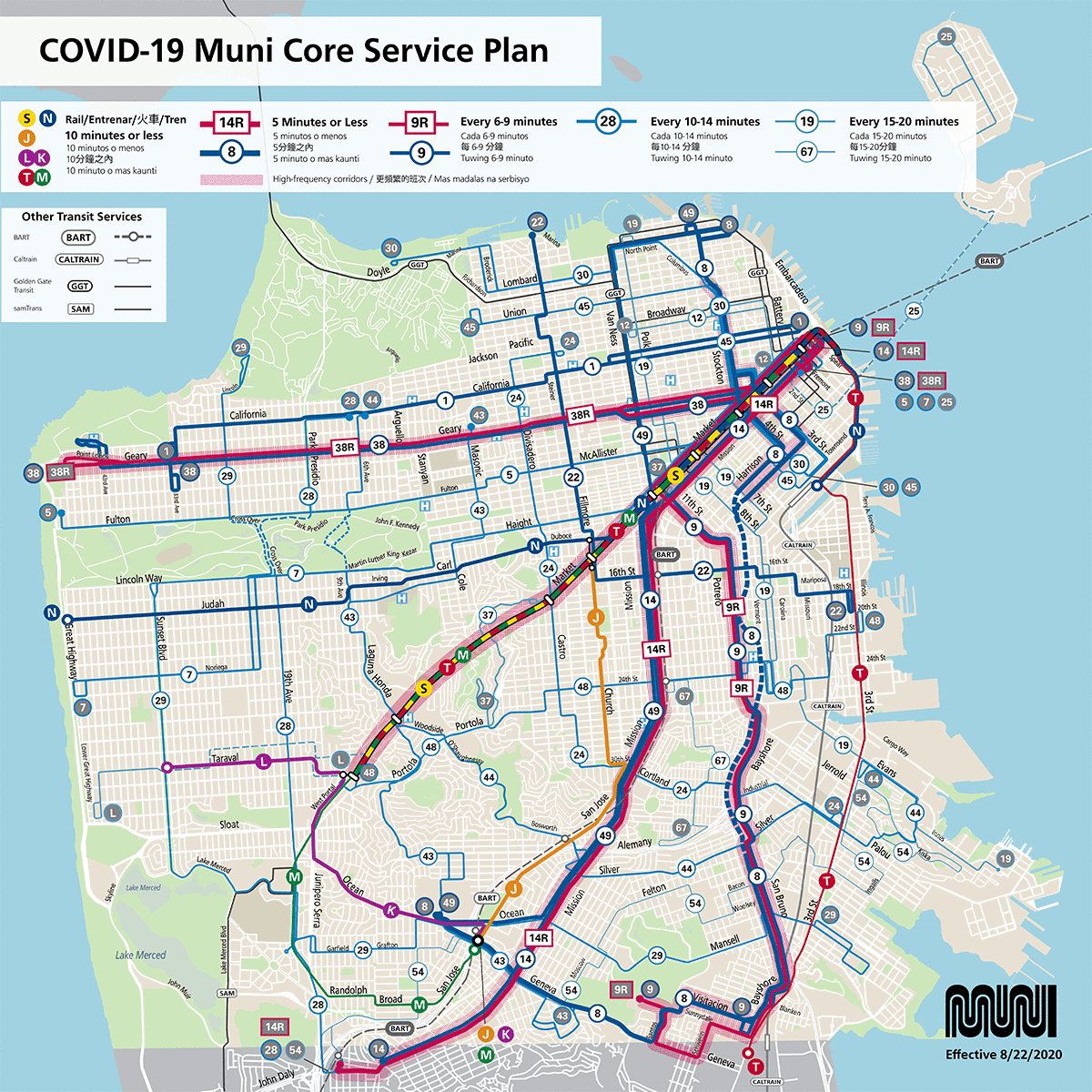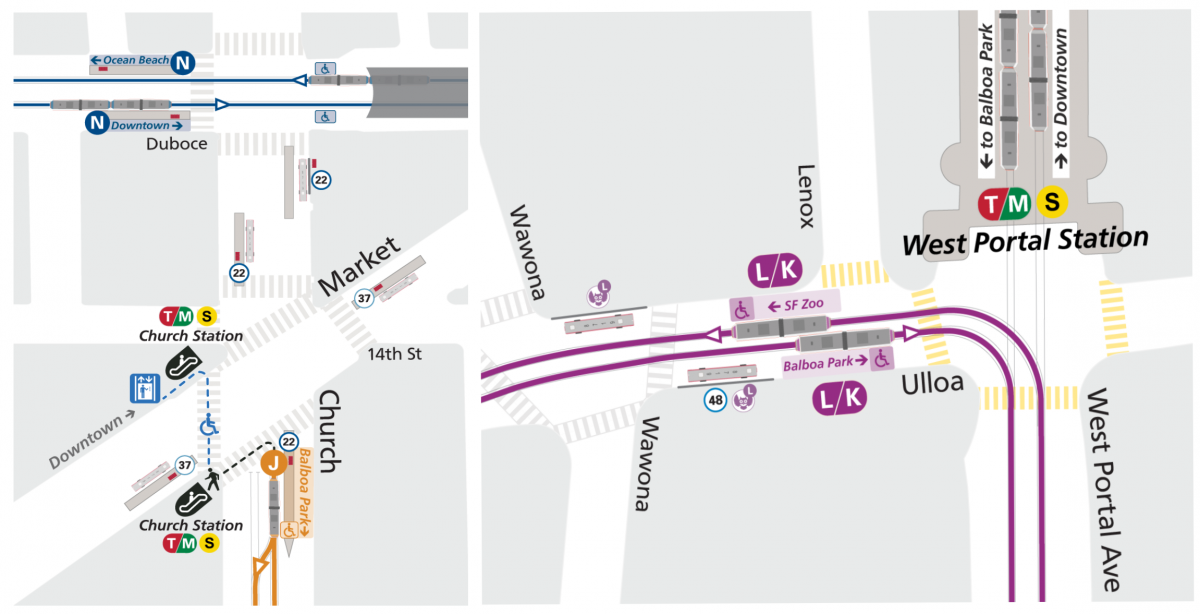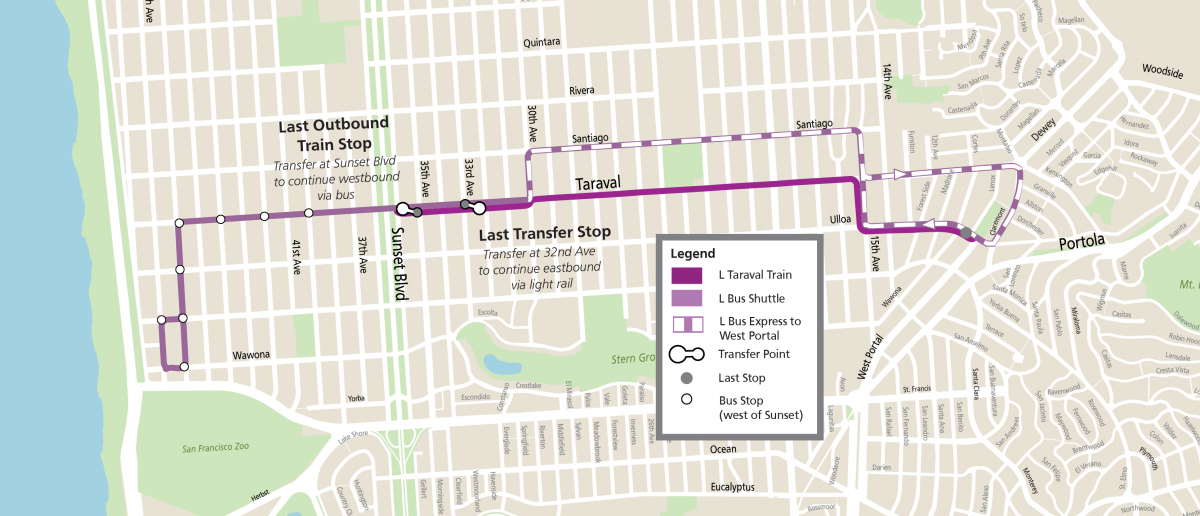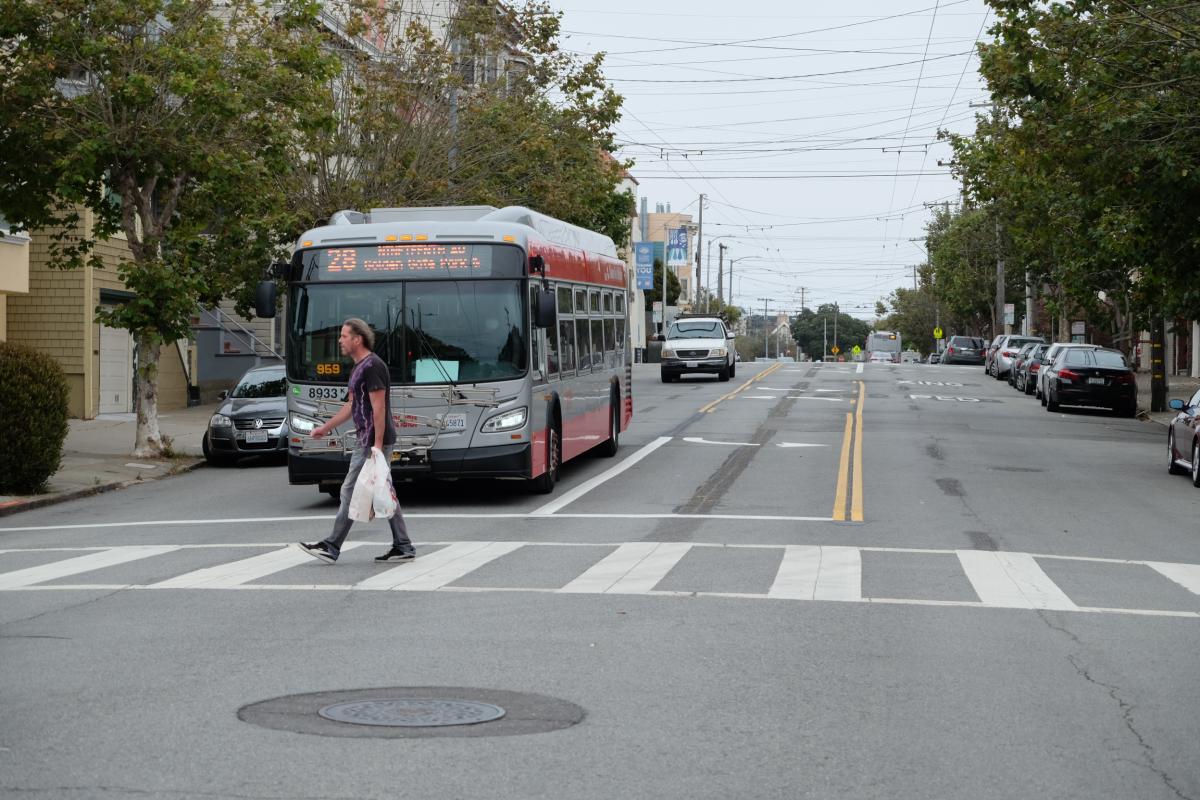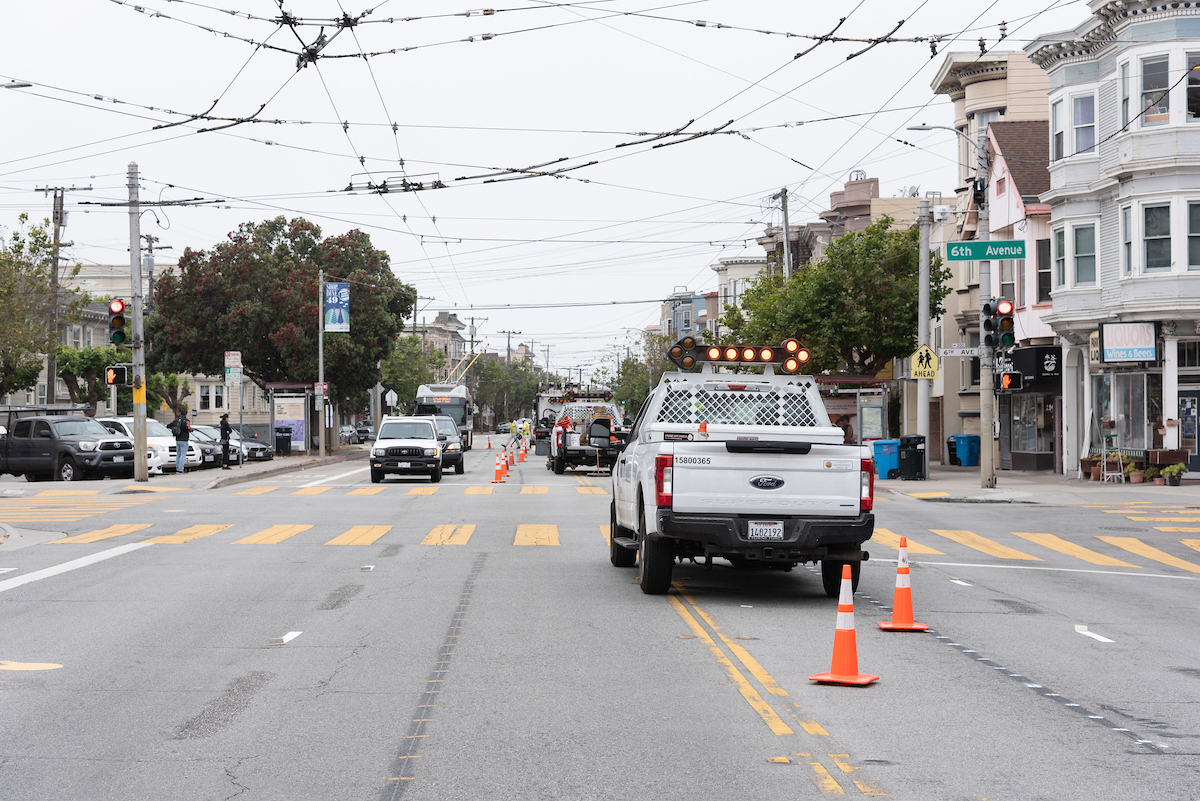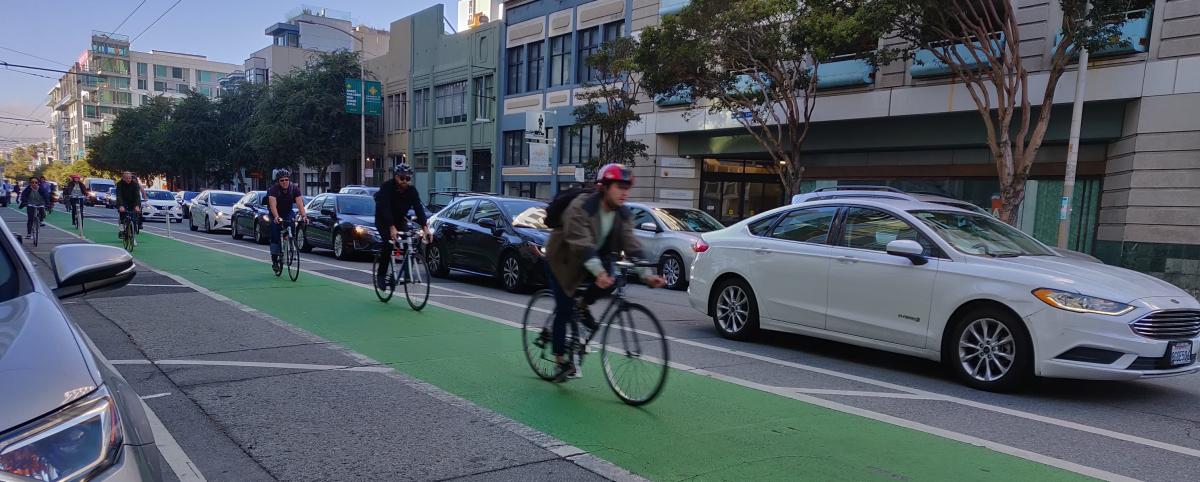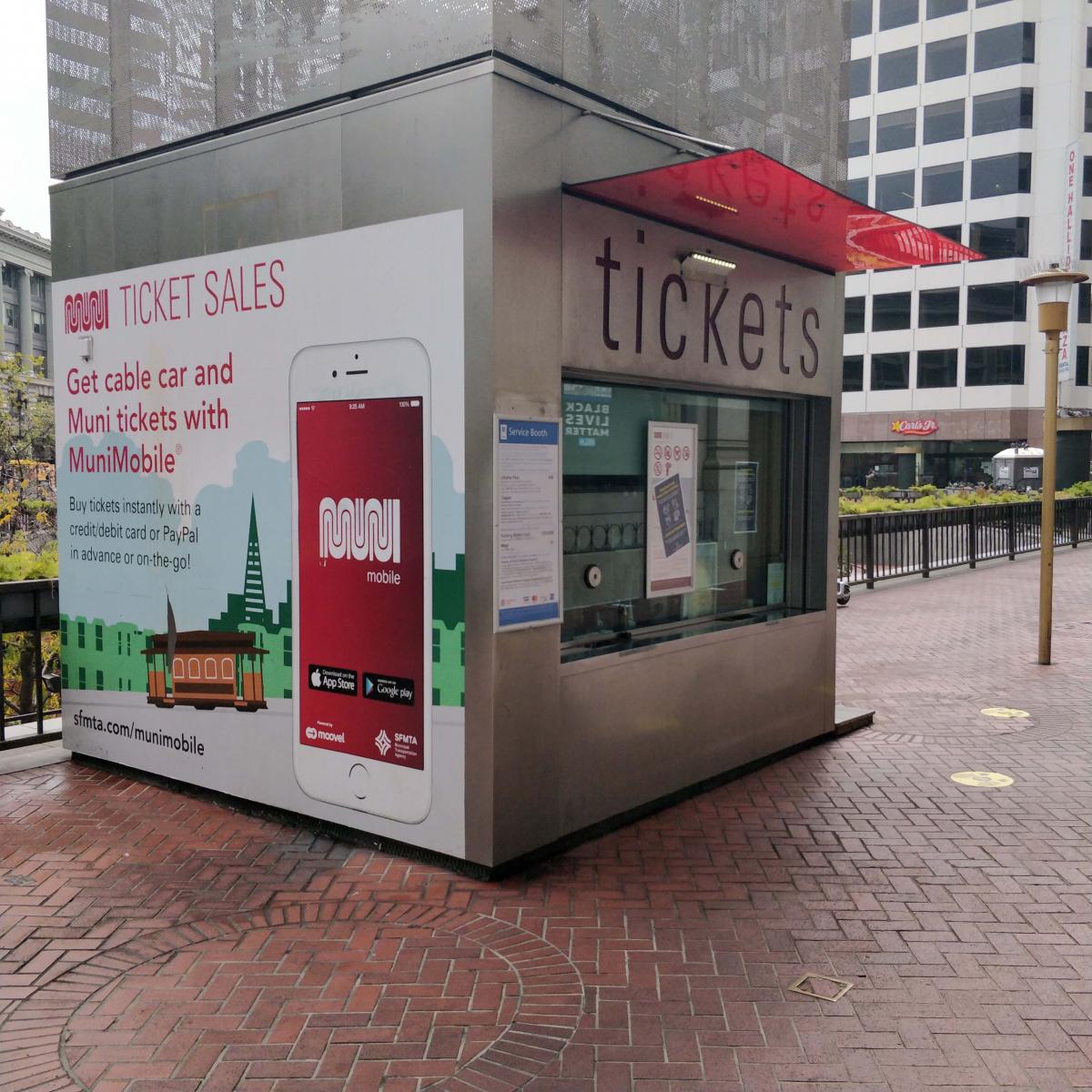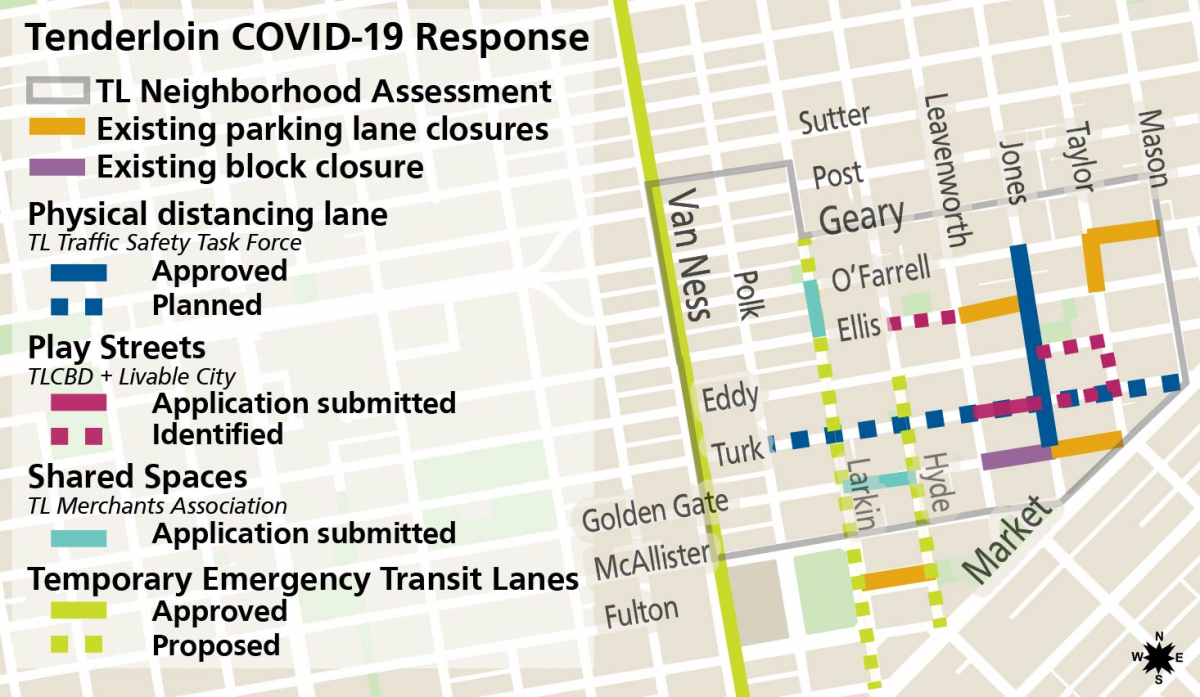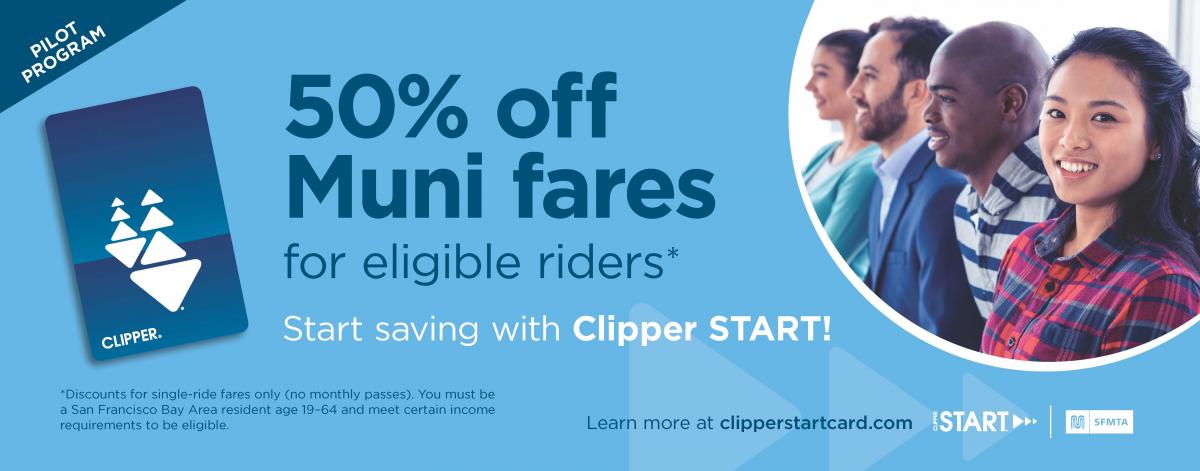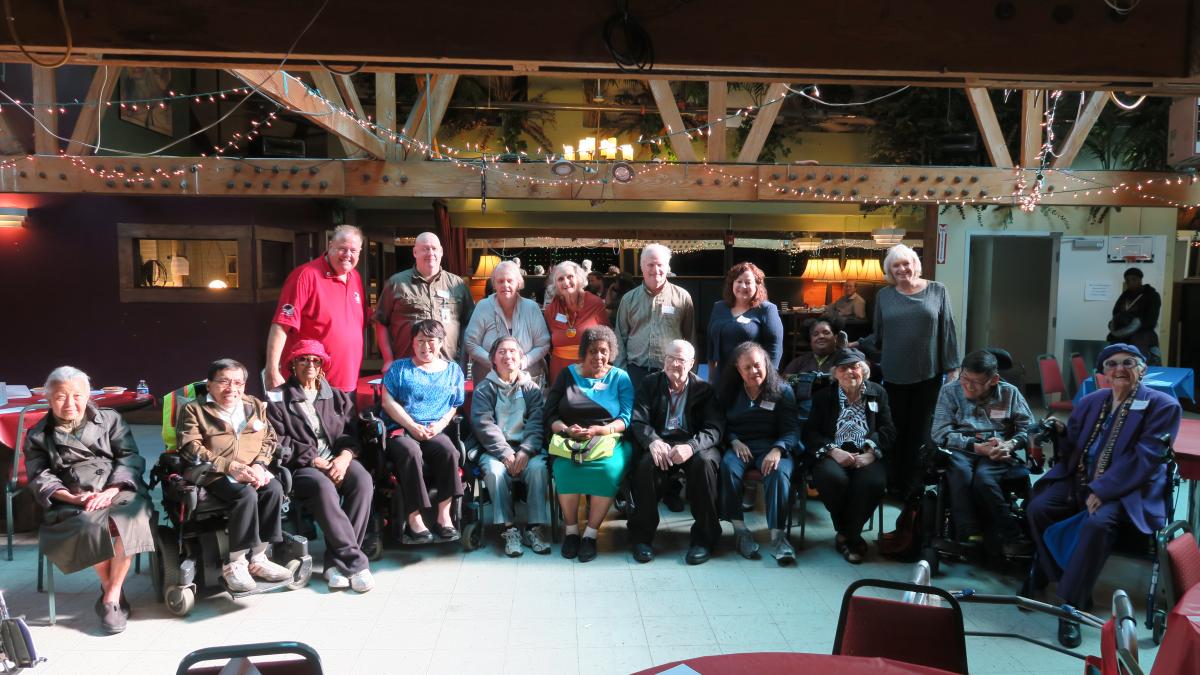Making Accessible Transfers for Muni Metro Beginning August 22
By Mariana Maguire
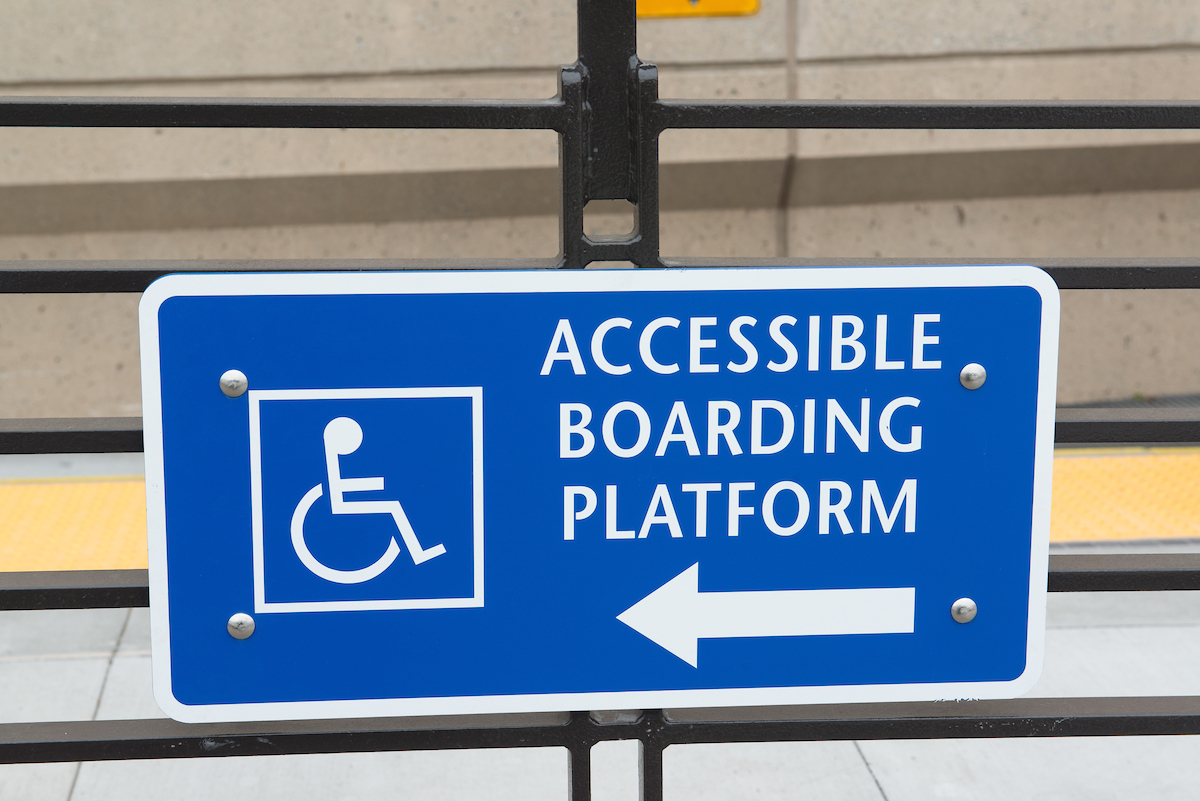
Photo: Accessible Muni Metro boarding platform placard
In preparation for new temporary LK Taraval-Ingleside and J Church transfers, we are constructing temporary accessible curbside platforms and temporary transfer zones. These changes will support safe and accessible customer movement between Metro lines when Muni Metro returns on August 22.
These new transfers to and from the subway for customers traveling to or from downtown will be required when the L Taraval and K Ingleside are temporarily combined into a new surface-only LK Taraval-Ingleside route between the SF Zoo and Balboa Park. Similarly, the J Church will become a surface-only route that will turn back at Church and Market streets. While we expect these changes to significantly increase the reliability of rail service, these changes require new infrastructure to make transfers accessible.
Many of our customers with disabilities rely on transit. While the temporary changes to Muni Metro will bring significant benefits to the entire system, especially for customers traveling through the subway, these additional transfers may also present new challenges for some customers. Temporary accessible boarding platforms are critical to supporting our customers with mobility devices, people with strollers, and others who may have difficulty boarding using stairs.

Photo: Example of a temporary accessible boarding ramp
West Portal LK Transfer Project
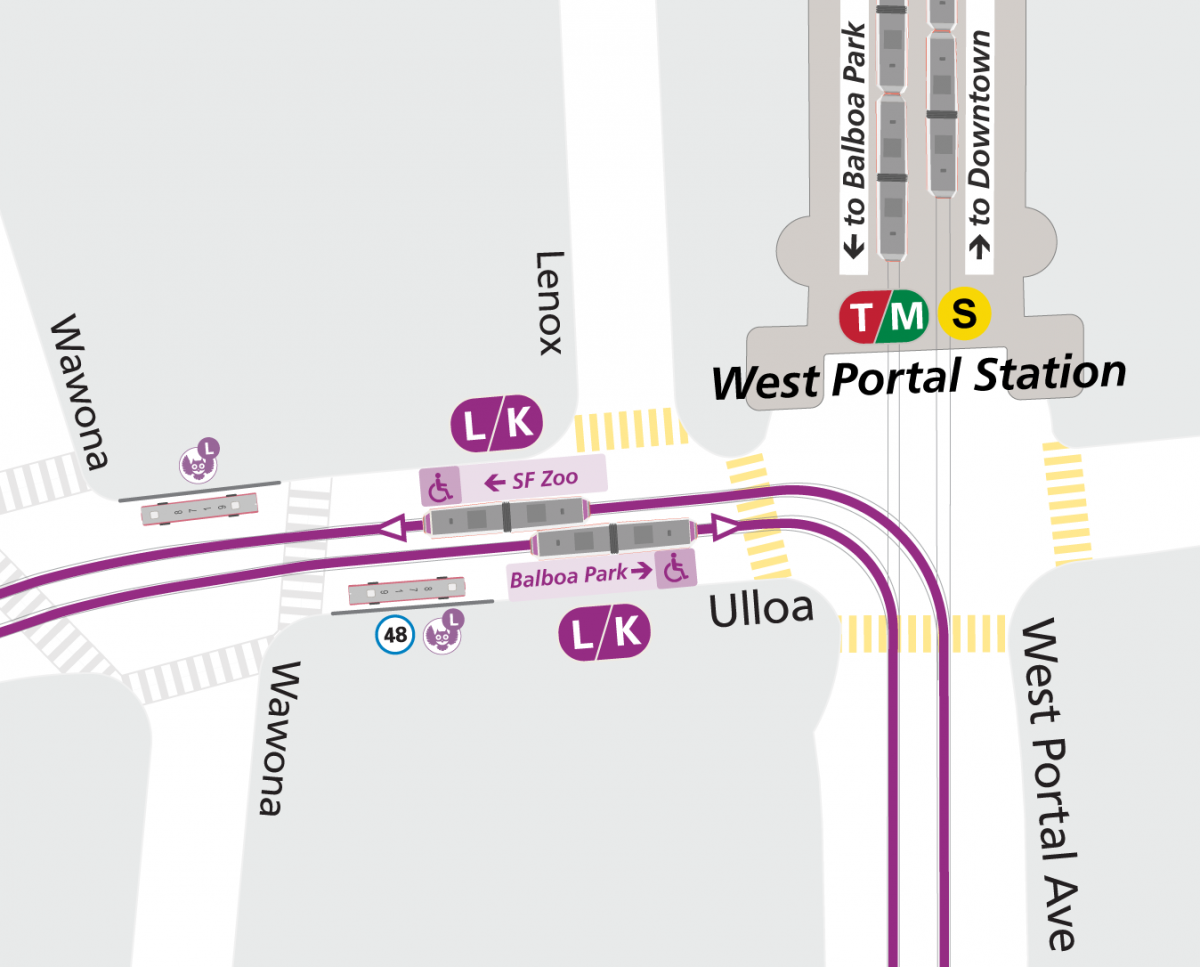
Diagram: New LK Taraval-Ingleside transfer at West Portal. Note the L Owl and 48 Quintara-24th will share a bus stop near the new train stop.
LK Taraval-Ingleside customers headed downtown will need to transfer at West Portal. The West Portal LK Transfer Project plans to build accessible curbside boarding platforms on Ulloa Street between West Portal Avenue and Wawona Street for the new LK Taraval-Ingleside stops, as well as implement several other street changes near West Portal Station to better accommodate customers transferring to and from West Portal station at these intersections.
LK Taraval-Ingleside trains heading both eastbound toward Balboa Park and westbound toward SF Zoo will stop on Ulloa Street near West Portal Station to let able-bodied customers board or get off. The train will then advance to the new temporary accessible curbside platforms to drop off and pick up customers with mobility devices, strollers, and others who may have difficulty boarding using stairs.
Customers continuing downtown can enter West Portal Station to board the S Shuttle or TM Third-Ocean View. Note that S Shuttle will use the inbound platform for both boarding and alighting.
Click on the animation below to see how this new configuration will work for customers.
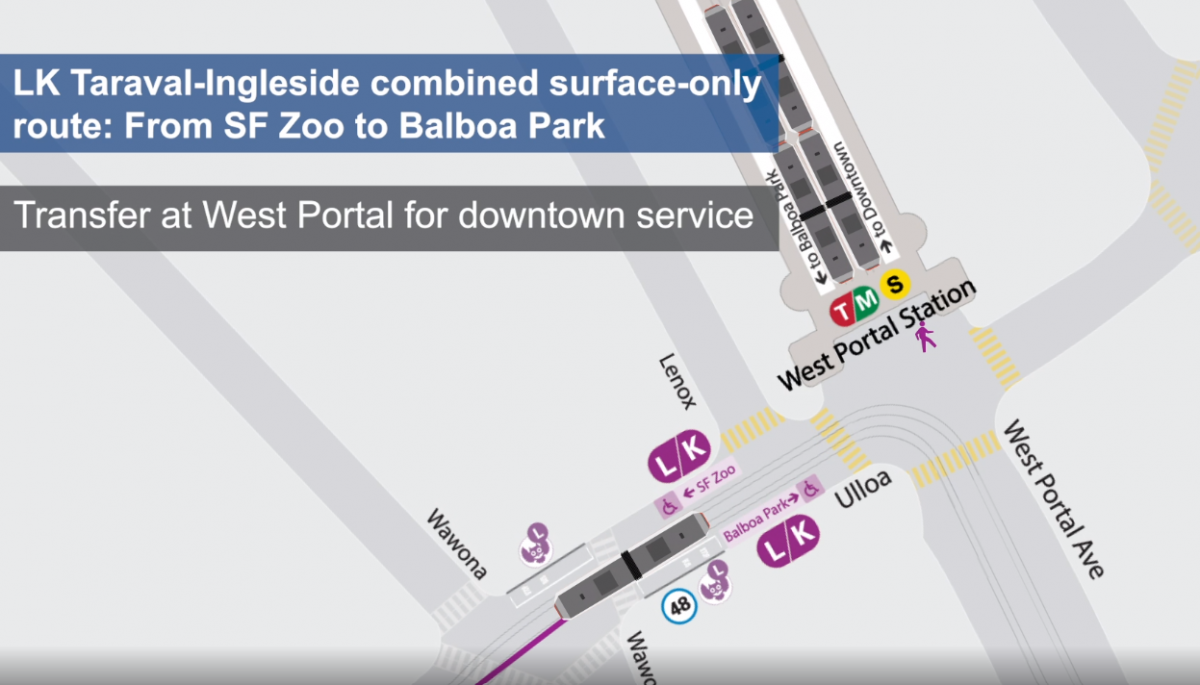
Animation: LK Taraval-Ingleside transfer point at West Portal
Another option for customers on the LK Taraval-Ingleside coming from Balboa Park is to transfer to the TM Third-Ocean View using the existing accessible stop at St. Francis Circle and continue downtown on the TM Third-Ocean View line without needing to change trains again at West Portal.
Wayfinding signs will be posted at the new LK stops and at West Portal Station to help customers navigate this change. We will also post Muni Ambassadors in the area for several days to help direct customers.
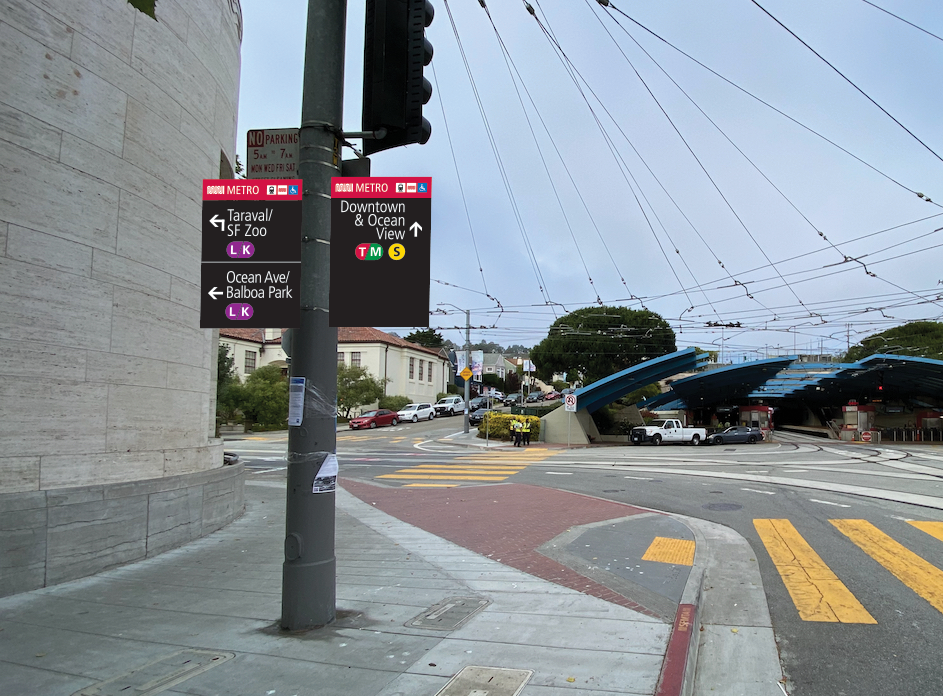
Image: Artist rendering of new LK Taraval-Ingleside wayfinding signage that will be installed at West Portal
J Church Transfer Improvement Project
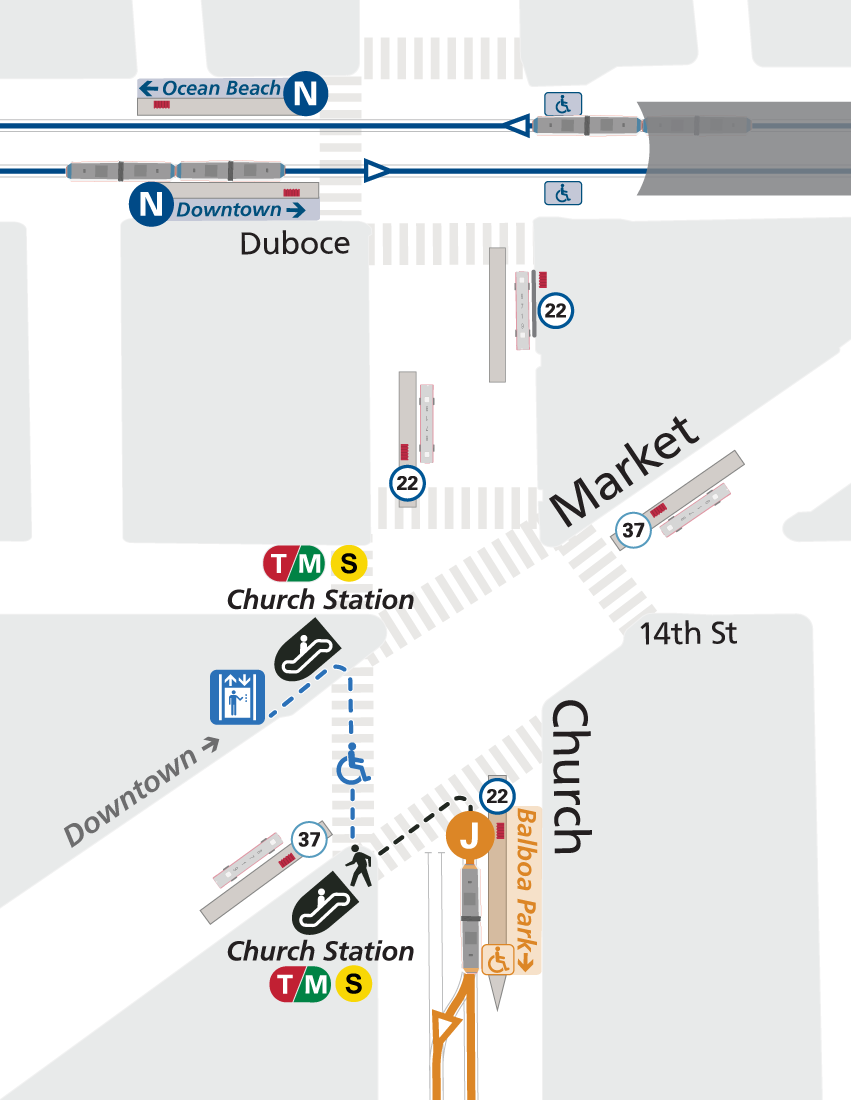
Diagram: New J Church transfer at Church and Market streets
Starting August 22, the last inbound stop for the J Church will be on Church Street at Market Street, near Church Street Station. J Church customers will need to transfer to Church Street Station for downtown service. These customers can catch the new, subway-only S Shuttles or the new combined TM Third-Oceanview from Church Street Station. Trains will not cross Market street but instead turn back toward Balboa Park Station.
To facilitate the turn-around, we will install a temporary emergency transit zone on Church Street between Market and 15th streets. This allows J Church passengers to use the existing accessible platform to connect with the subway for both inbound and outbound trips. This transit zone limits traffic to ensure a safer boarding process for J Church customers and to limit conflicts with the train turning maneuvers.
For customers heading inbound toward downtown, J Church trains will stop on Church Street at Market Street to let customers with mobility devices, strollers, and others who may have difficulty boarding using stairs board at the existing accessible platform south of Market Street. The train will then pull forward for customers who do not need accessible boarding. This follows the same process as usual at this stop.
Customers continuing downtown who need to use the elevator to access Church Station can cross Church Street heading west and then cross Market Street heading north. The Church Station elevator is located on the northwest corner of Market Street and Church Street. Customers can also access Church Street Station via escalator on either the southwest or northwest side of Market Street.
Click on the animation below to see how this new configuration will work for customers.
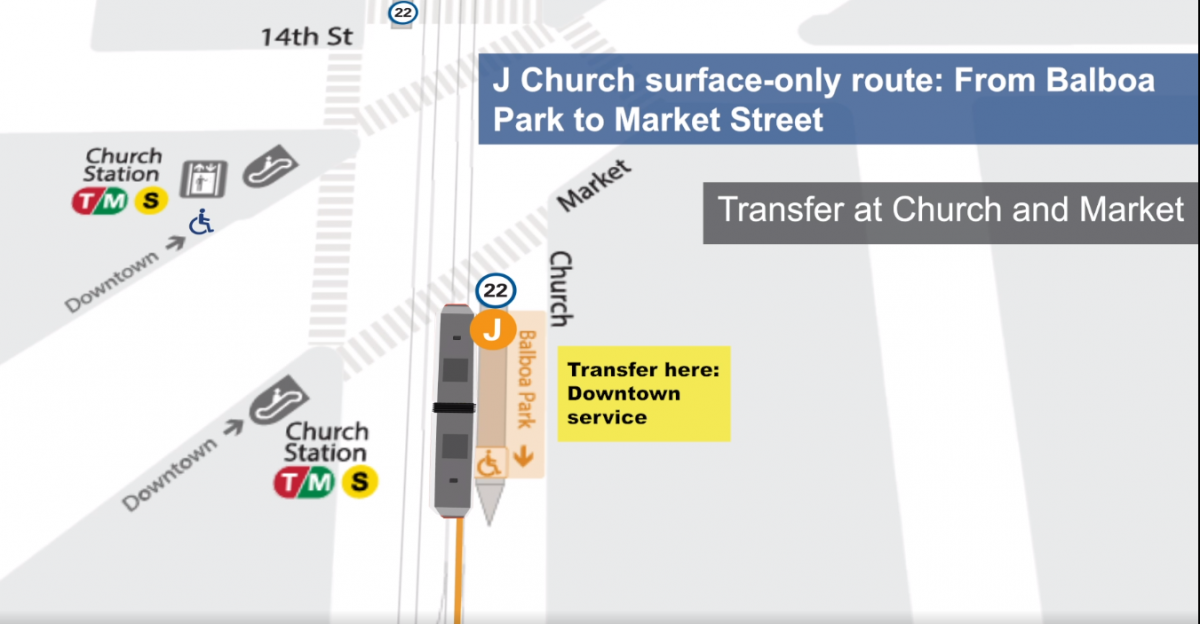
Animation: J Church transfer point at Church and Market streets
Just like the new temporary LK Taraval-Ingleside, the temporary J Church will feature wayfinding signage and Ambassadors both at street level and in the subway to guide transferring customers.
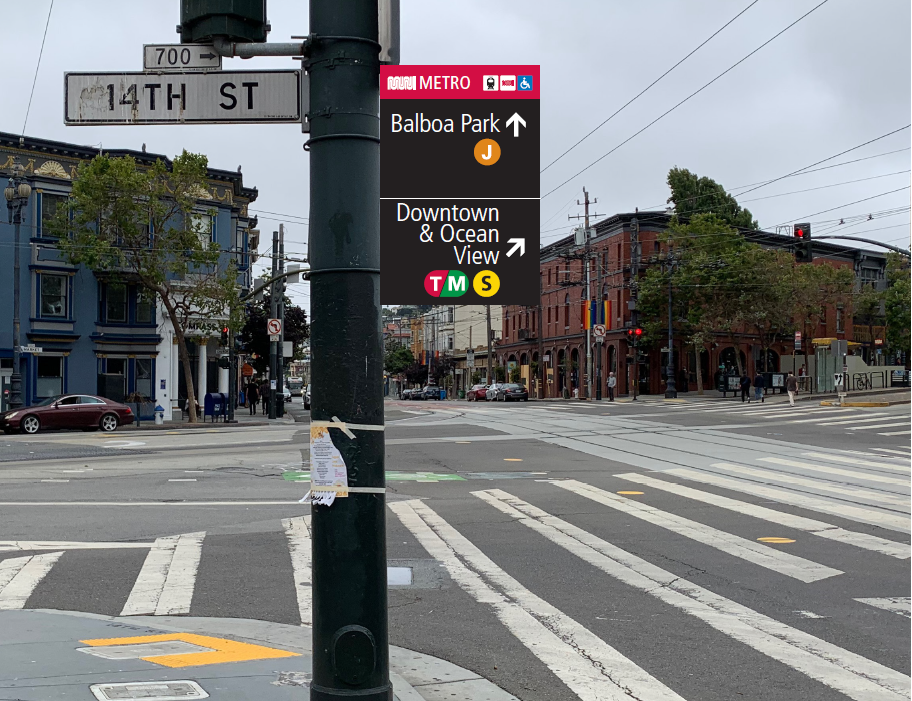
Image: Example of new wayfinding signage that to be installed at Church and Market streets
Our transfer improvement projects, and service changes teams are conducting robust outreach to community-based organizations, merchants, stakeholders, neighbors and essential businesses and services to inform the public about these important temporary changes. Feedback from these efforts will directly shape the process for evaluating and adjusting the design of these changes. Note that these changes are temporary. Long-term changes will require additional public process.
We want to hear from you and welcome your feedback.
COVID Rider Reminders
Help the city reduce COVID transmission rate by continuing to stay at home except for essential trips. Shop local and support your neighborhood businesses. Always wear a face covering and maintain physical distance.
Use alternate transportation whenever possible – walk, bike, taxi or drive – to save a seat on Muni for those who don’t have other options. Our subsidized Essential Trips Card program is an alternative for seniors and people with disabilities to use taxis instead of Muni if that better meets their needs. Carshares and micromobility options are also available. Visit our COVID-19 Developments and Response page for more information.
If you do need to travel on Muni:
- Please respect your Muni operator. They are working hard for you.
- Face coverings are required on Muni. To avoid getting passed up, cover your nose and mouth with face cover or mask.
- Board by the back door unless you require assistance.
- Give yourself extra time. Your trip may now include transfers and a longer walk, and your fare is good for two hours across multiple routes.
Visit our COVID-19 Developments and Response page for the latest information about Muni routes in service or to explore alternate ways to get around the city. To provide feedback on any Muni service changes please use our Muni Feedback Form.
Published August 13, 2020 at 12:58AM
https://ift.tt/2DLQjmN
